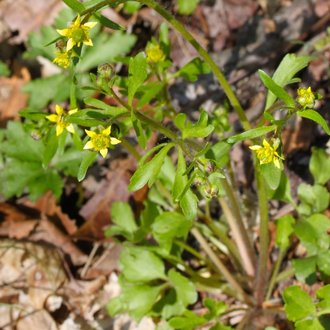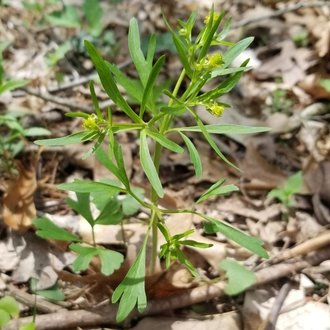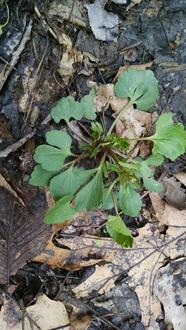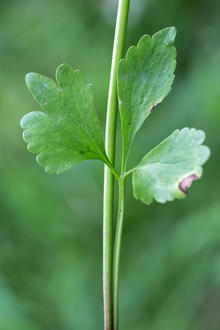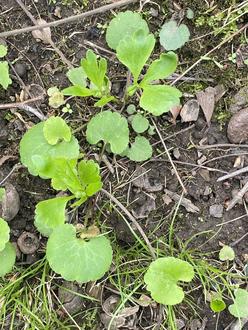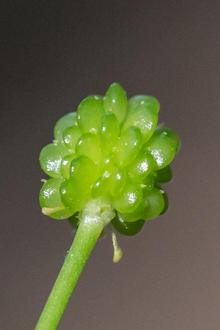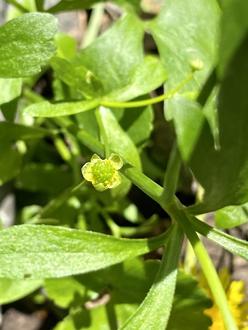Small-Flowered Buttercup (Ranunculus abortivus L.)
Also known as littleleaf buttercup, kidney-leaved crowfoot.
↑Summary
An inconspicuous but widespread and common flower, a biennial or short-lived perennial.
↑Range - Expand
| Legend | Color |
| Native | |
| Native or Not Present |
This tentative map is based on our own research. It may have limited data on Canada and/or Mexico, and there is some subjectivity in our assignment of plants as introduced vs. expanded. Read more in this blog post.
Although this plant occurs somewhere in each of these regions, it may only occur in a small part of some or all of them.
↑Similar Plants
↑Habitat
Small-flowered buttercup occurs in a wide variety of moist to mesic, disturbed habitats, in fertile loam to clay-loam soil. Natural habitats include woodland openings and edges, especially in floodplains and other bottomlands, and also in mesic upland forests. It is common in anthropogenic habitats including paths through woodlands, pastures, abandoned fields, margins of yards, suburban gardens, vacant lots, and areas along roadsides and railroads, and other waste ground, especially near wet ditches.
It tolerates some flooding and waterlogging of soils. It tolerates a wide range of lighting conditions, usually being most abundant in partial sun exposures.
In much of its range it is more likely on soils rich in organic matter, but in the northeastern portion of its range it is also found in rockier habitats including cliffs, ledges, talus slopes, and rock outcroppings.
↑Life Cycle
This species grows opportunistically as a biennial or short-lived perennial.
↑Faunal Associations
The foliage is browsed to a minor extent by rabbits, wood ducks, and wild turkeys. The seeds are eaten, also to a minor extent, by the eastern chipmunk and meadow vole, as well as by ducks and turkeys. Livestock usually avoids browsing on the foliage.
The flowers have nectar that attract ladybugs (Coccinellidae beetles), small bees, hoverflies (Syrphidae), and a variety of other flies. Ladybugs and some flies also eat the pollen, and some bees collect pollen to feed to their larvae. Some nectar usually remains on the carpel even after the petals have dropped, and ants collect this nectar.
↑Links & External Resources
• Ranunculus abortivus (Small-flowered Buttercup) | Illinois Wildflowers (About This Site)
• Ranunculus abortivus (littleleaf buttercup) | USDA PLANTS Database (About This Site)
• Ranunculus abortivus | Go Botany (About This Site)
• Ranunculus abortivus | Biota of North America Project (BONAP) (About This Site)
• Ranunculus abortivus | NatureServe Explorer (About This Site)
• Ranunculus abortivus | Flora of North America (About This Site)
• Ranunculus abortivus | Missouri Plants (About This Site)
• Little-leaved Buttercup | Maryland Biodiversity Project (About This Site)
• Ranunculus abortivus (Little-leaf Buttercup) | Minnesota Wildflowers (About This Site)
• Ranunculus abortivus L. (Kidneyleaf Buttercup) | Digital Atlas of the Virginia Flora (About This Site)




